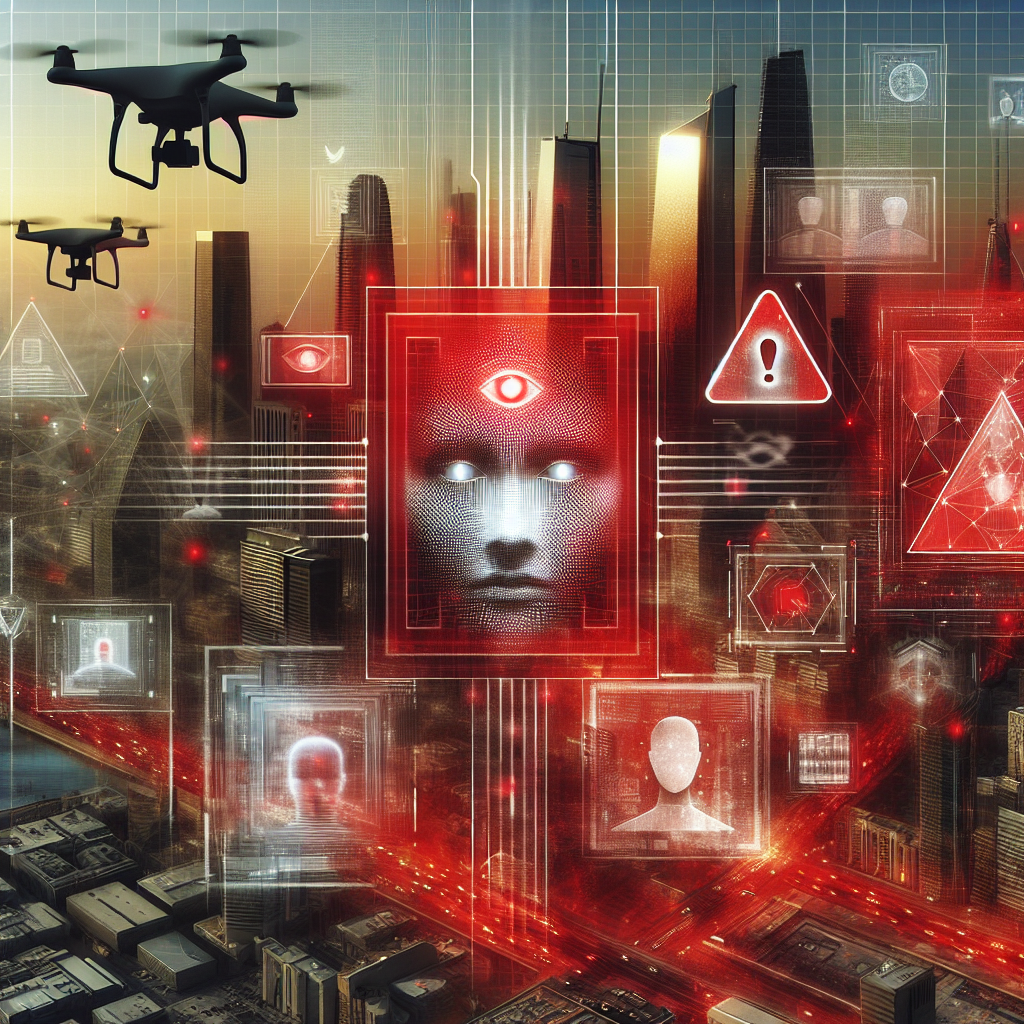The Risks of AI in Law Enforcement: Impacts on Policing
Artificial Intelligence (AI) has become an integral part of various industries, including law enforcement. The use of AI in policing has been touted as a way to improve efficiency, reduce crime rates, and enhance public safety. However, there are also risks associated with AI in law enforcement that need to be carefully considered.
One of the main risks of AI in law enforcement is the potential for bias and discrimination. AI systems are only as good as the data they are trained on, and if the data used to train these systems is biased, then the AI system itself will be biased. This can lead to discriminatory outcomes, such as targeting certain groups of people based on race or ethnicity. For example, if a predictive policing algorithm is trained on historical crime data that disproportionately targets minority communities, then the AI system will likely continue to target those communities, perpetuating the cycle of discrimination.
Another risk of AI in law enforcement is the lack of transparency and accountability. AI systems are often complex and opaque, making it difficult for law enforcement agencies to understand how these systems make decisions. This lack of transparency can make it challenging to hold AI systems accountable for their actions, especially in cases where these systems make mistakes or produce biased outcomes. Without transparency and accountability, there is a risk that AI systems in policing could be used in ways that violate civil rights or undermine the rule of law.
Furthermore, the use of AI in law enforcement raises concerns about privacy and surveillance. AI systems can be used to analyze vast amounts of data, including personal information about individuals, in order to predict and prevent crime. While this may sound like a proactive approach to policing, it also raises serious concerns about the erosion of privacy rights and the potential for mass surveillance. There is a risk that AI systems could be used to monitor and track individuals in ways that infringe on their civil liberties, without their knowledge or consent.
In addition to these risks, there are also concerns about the potential for AI systems to be hacked or manipulated. Law enforcement agencies rely on AI systems to make critical decisions, such as identifying suspects or predicting crime hotspots. If these systems are vulnerable to cyberattacks or manipulation, then there is a risk that they could be used to perpetrate or cover up crimes. This raises serious concerns about the security and integrity of AI systems in law enforcement, and the potential for these systems to be exploited for malicious purposes.
Despite these risks, the use of AI in law enforcement continues to grow. From predictive policing algorithms to facial recognition technology, AI systems are being deployed in various ways to assist law enforcement agencies in their work. While there are certainly benefits to using AI in policing, it is important to carefully consider the risks and implications of these technologies in order to ensure that they are used responsibly and ethically.
FAQs:
1. What are some examples of AI in law enforcement?
– Some examples of AI in law enforcement include predictive policing algorithms, facial recognition technology, and automated license plate readers. These technologies are used to analyze data, identify suspects, and track criminal activity in order to improve public safety.
2. How can AI in law enforcement be biased?
– AI systems can be biased if they are trained on data that reflects societal biases or discriminatory practices. For example, if a predictive policing algorithm is trained on historical crime data that disproportionately targets minority communities, then the AI system will likely continue to target those communities, perpetuating the cycle of discrimination.
3. What are the risks of using AI in law enforcement?
– The risks of using AI in law enforcement include bias and discrimination, lack of transparency and accountability, privacy and surveillance concerns, and the potential for hacking or manipulation. These risks can have serious implications for civil rights, public safety, and the rule of law.
4. How can law enforcement agencies address the risks of AI in policing?
– Law enforcement agencies can address the risks of AI in policing by ensuring that AI systems are trained on unbiased data, promoting transparency and accountability in the use of these systems, protecting privacy rights, and enhancing cybersecurity measures to prevent hacking and manipulation. It is also important for law enforcement agencies to engage with stakeholders, including communities that may be impacted by AI in policing, in order to address concerns and build trust in these technologies.

